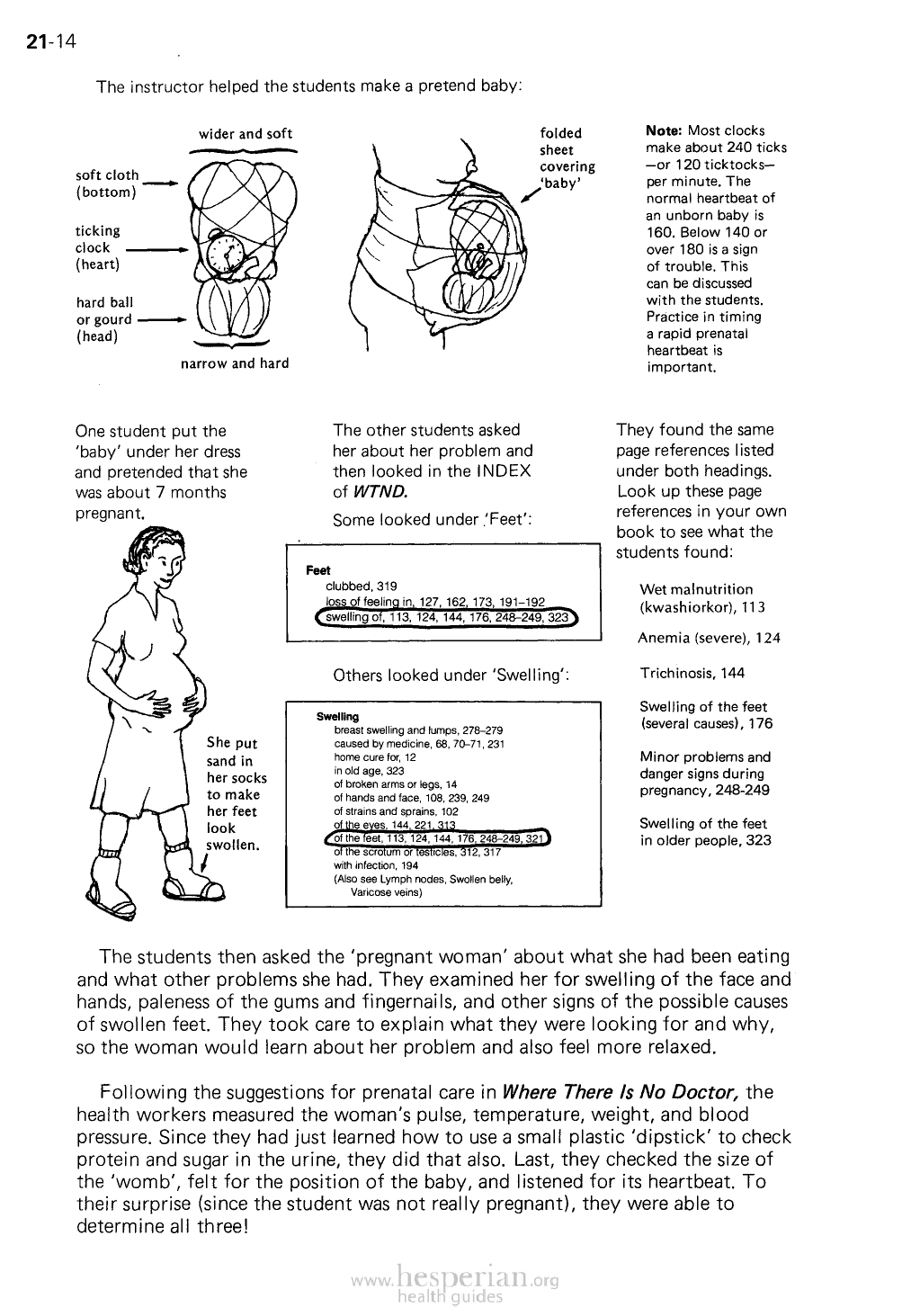
21-14
The instructor helped the students make a pretend baby:
soft cloth
(bottom)
ticking
clock
(heart)
hard ball
or gourd
(head)
wider and soft
narrow and hard
folded
sheet
covering
‘baby’
Note: Most clocks
make about 240 ticks
-or 120ticktocks-
per minute. The
normal heartbeat of
an unborn baby is
160. Below 140 or
over 180 is a sign of
trouble. This can be
discussed with
the students.
Practice in timing
a rapid prenatal
heartbeat is
important.
One student put the
‘baby’ under her dress
and pretended that she
was about 7 months
pregnant.
She put
sand in
her socks
to make
her feet
look
swollen.
The other students asked
her about her problem and
then looked in the INDEX
of WTND.
Some looked under. ‘Feet’:
Others looked under. ‘Swelling’:
They found the same
page references listed
under both headings.
Look up these page
references in your own
book to see what the
students found:
Wet malnutrition
(kwashiorkor), 11 3
Anemia (severe), 124
Trichinosis, 144
Swelling of the feet
(several causes), 176
Minor problems and
danger signs during
pregnancy, 248-249
Swelling of the feet in
older people, 323
The students then asked the ‘pregnant woman’ about what she had been eating
and what other problems she had. They examined her for swelling of the face and
hands, paleness of the gums and fingernails, and other signs of the possible causes
of swollen feet. They took care to explain what they were looking for and why, so
the woman would learn about her problem and also feel more relaxed.
Following the suggestions for prenatal care in Where There Is No Doctor, the
health workers measured the woman’s pulse, temperature, weight, and blood
pressure. Since they had just learned how to use a small plastic ‘dipstick’ to check
protein and sugar in the urine, they did that also. Last, they checked the size of
the ‘womb’, felt for the position of the baby, and listened for its heartbeat. To their
surprise (since the student was not really pregnant), they were able to determine all
three!